When I told Fafa during our last Japan trip that the day’s itinerary was to go to Kobe to eat Kobe beef, he didn’t protest. The man almost never has any words against eating meat. He also quickly learned that the theme of our honeymoon was for him to follow whatever he wanted to do in Japan. And that day, I tried to eat the most expensive beef in the world, Kobe beef.
Kobe Beef
Like many others who put eating the melt-in-your-mouth meat on their bucket list, I, too, have been curious about Kobe Beef, one of Japan’s defining cultural food icons.
Kobe beef comes from Wagyu (All Japanese cows are called Wagyu) cattle born, bred, and slaughtered in Hyogo Prefecture, Japan. It’s raised by strict standards implemented by the Japanese government.
My curiosity peaked after learning the rumours surrounding the way of Kobe beef rearing, which includes a beer diet, sake massage, and classical music.
Ishida Set Meal
Located less than half an hour from Osaka, where we stayed for the week, we made our way to Kobe right before lunchtime. I didn’t research where to eat Kobe beef in Kobe. However, once we reached the station, I pulled out Google and filtered the restaurant choices by four stars and above with 3 dollar signs or below. A few minutes later, we took a lift in a semi-hidden building to a higher level where the Ishida restaurant was located.
Inside the restaurant, we were immediately greeted with Japanese hospitality. After a few “Irasshaimase”, which means welcome to the store, our coats were taken, we were seated and given the menu. The menu was pretty easy to understand, with pictures and Yen clearly stated on each page. After discussing how much budget we had left for this trip, how much we were willing to spend, and how much we liked eating beef, we avoided over-drafting our credit card and chose mid-range set meals.
Marbled Beef
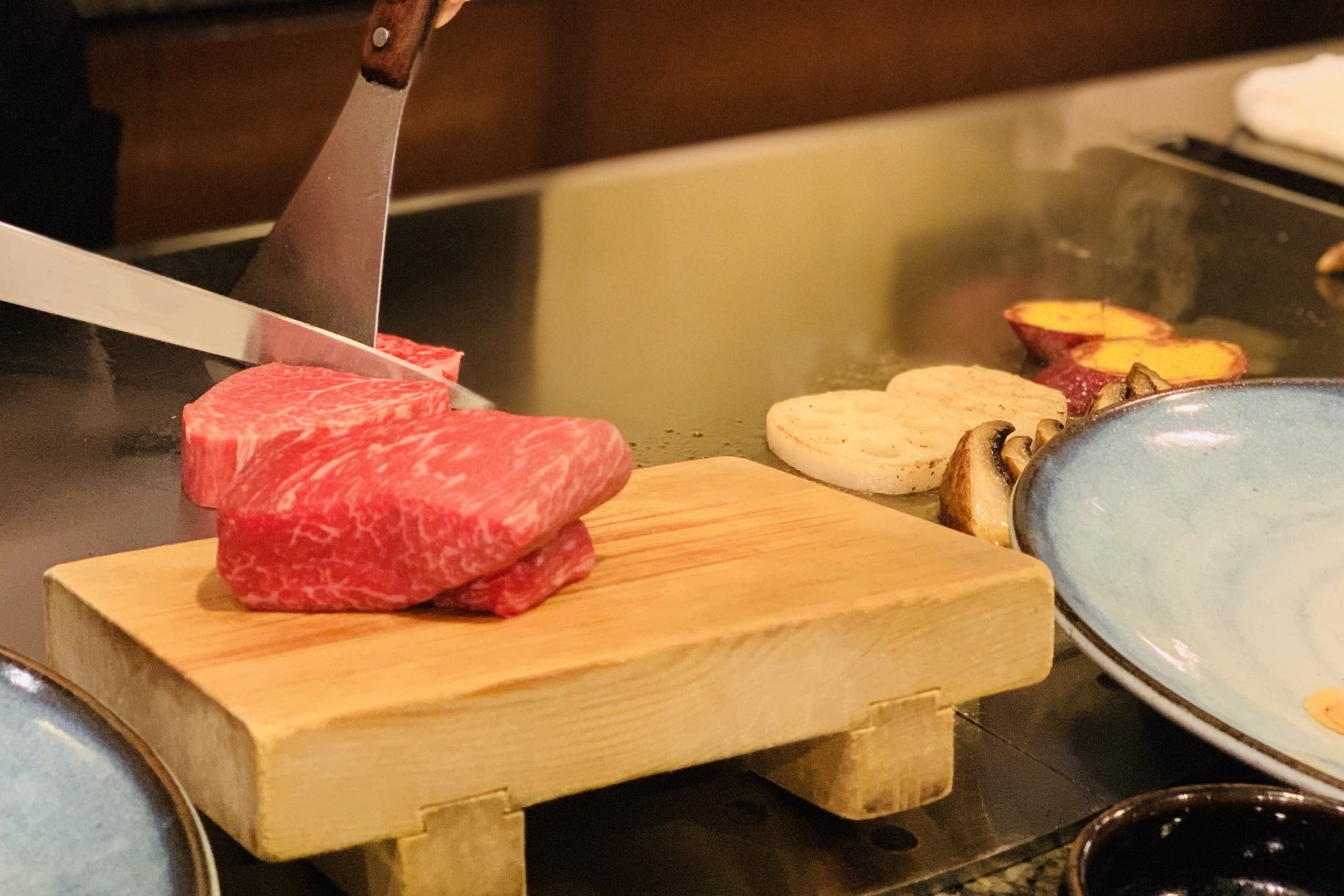
The beef came rather quickly after we placed the order. The waiter then offered to take a picture of us together with it. Was it a thing?! I didn’t get it, but it didn’t stop us from grinning stupidly while holding a wooden plate featuring raw meat. He then explained the white marble-like complexion of the meat, the signature of Kobe beef meat. It’s due to a much higher amount of intramuscular fat than other meats, translated to higher good fats.
Teppanyaki
We had the teppanyaki-style dining, where we sat in front of a communal flat stove directly opposite the chef who stood on standby, ready to cook masterfully. Suppose you’ve never had teppanyaki-style dining before; I do recommend it. It’s a fun experience because we see the food being artfully cooked right then and there. The best thing about teppanyaki is that it engages all senses, from the irresistible smell to the sizzling sound of cooked food.
Sitting there with Fafa made me reminisce of many of our early date nights spent in Teppanyaki style open restaurant on the ground floor of Northpoint City mall in the Yishun neighbourhood, Singapore. It’s one of my most treasured memories of us. But I wonder whether he still remembers it.
The chef started his ninja-style cooking by frying thinly sliced garlic pieces, followed by mushroom and yam, before shifting to the star, the marbled piece of meat. He did the whole thing so gracefully that it felt like we were watching a show in a theatre, but better because we got to eat the central performance immediately afterwards.
The Beef
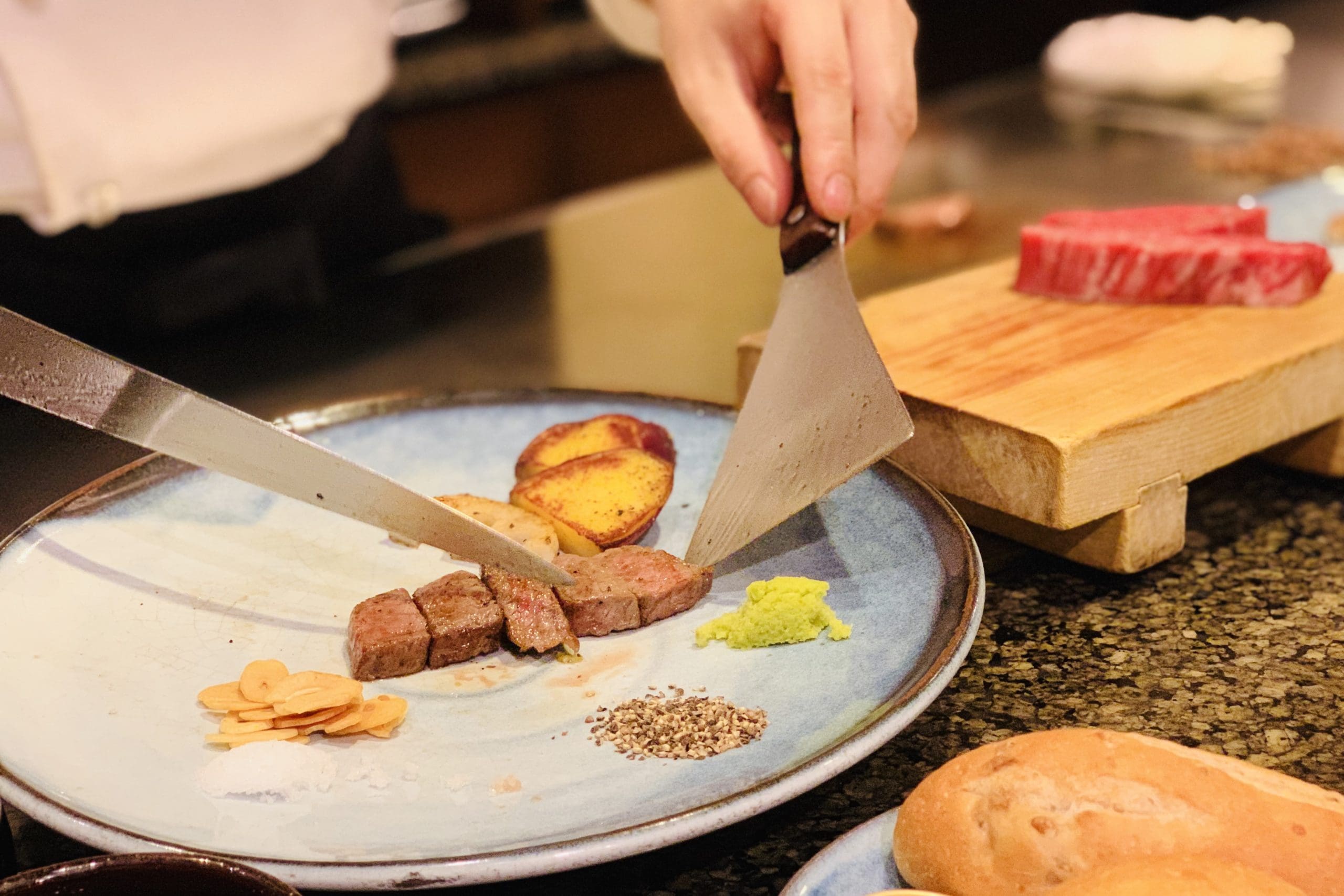
Placing the perfectly cooked rectangular-shaped medium-rare beef meat in front of us, the chef graciously suggested how to eat it with the five seasonings on our plates. He told trying the first piece without any seasoning, then eat another piece with just salt, then with wasabi, continuing with pepper and soy sauce and the last with fried garlic slivers.
I am sure the question “How does the cooked Kobe beef taste?” has been hanging in your mind. The first question came from Fafa soon after I had the first piece — “So?” he turned to me and asked while still chewing his. Unable to distract me from the delicious feast inside my mouth, my reply came with an approving nod and ear-to-ear smile.
The beef was, well, everything a meat lover could dream of. It’s as soft as butter, juicy, tender, moist, flavorful, and succulent. And each of the seasonings mentioned earlier managed to heighten the flavour of each piece beautifully. I had never been a fan of red meat, but I was a convert that day. It’s an endorphin-inducing piece of beef that melts in the mouth.
Near the end of the meal, our chef offered to make us some fried rice with beef morcels. Though tempted, we politely declined. We were already packed and didn’t want to stuff ourselves as it would lessen the whole experience. So instead, we finished the delicious morsels by ourselves with a few last “Yummy..” s and “Oishi” s.
Soon after, we paid the bill, exchanged a few “Arigatos” and bows with the chef and rolled out of the restaurant high on food.
Is Kobe Beef A Life-Changing Food Experience?
“Thanks for taking me here; it’s the best beef I have ever eaten, ” Fafa said on the train ride back to Osaka. I nodded. Almost dozing off, thanks to the food coma, I reflected on my own Kobe beef-eating experience. Eating internationally recognized as the best beef meat in the world was one of the highlights of this Japan trip. But to be honest, for me, it doesn’t make it to the top 10 food experiences in my life.
I think more fondly of the humble Hida beef rice bowl we had in a random restaurant in Takayama during our 2017 Japan trip. As for the title of best meal that includes beef meat, I go to another random restaurant beside Nagano station.
Still, if you are a foodie (and who isn’t?) I can’t think of any reason to skip an exquisite meal of the world-famous Kobe beef in Japan. Despite not seeing it as a life-changing food experience, as some claim, I am fortunate to enjoy the iconic piece of Japanese food culture.
Follow me on Instagram@KultureKween for more recent updates.
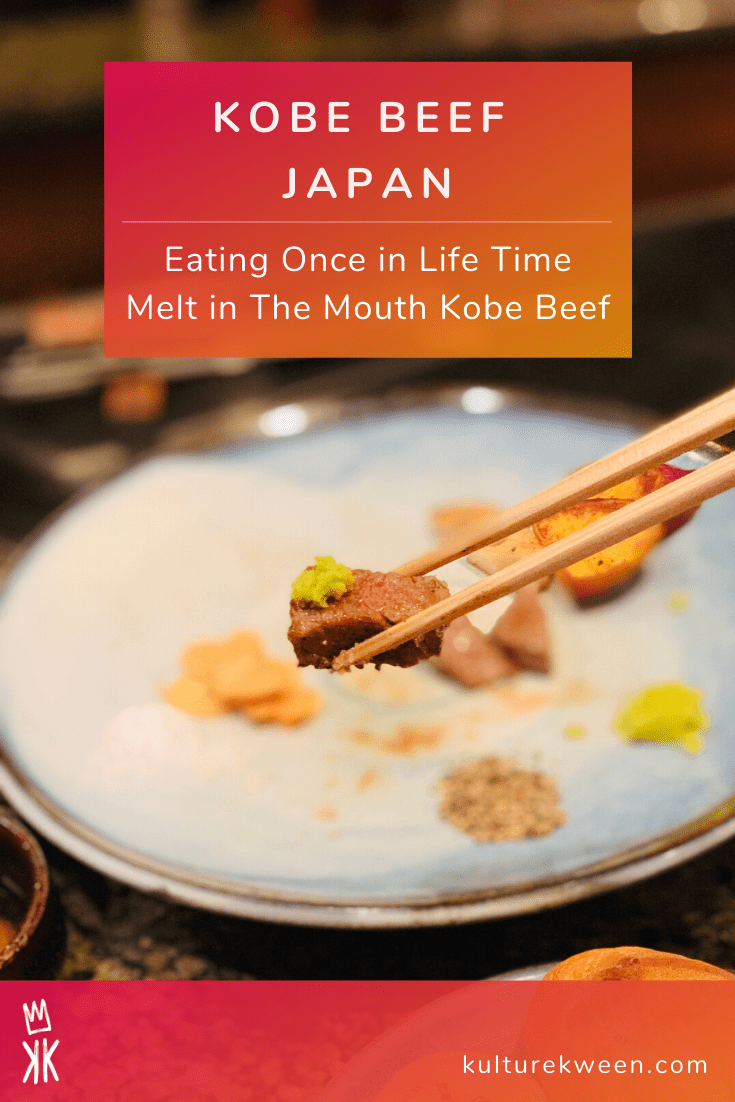
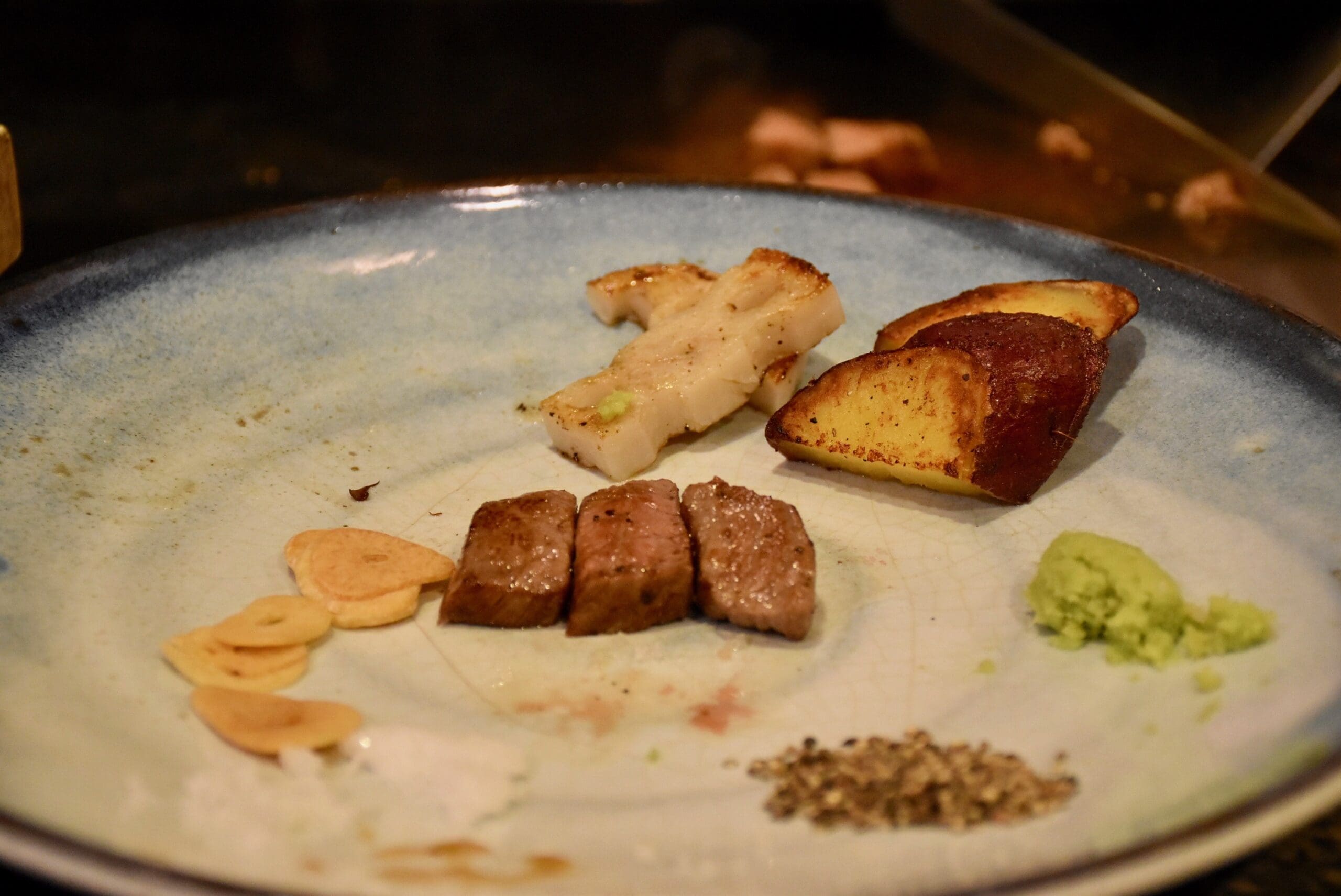
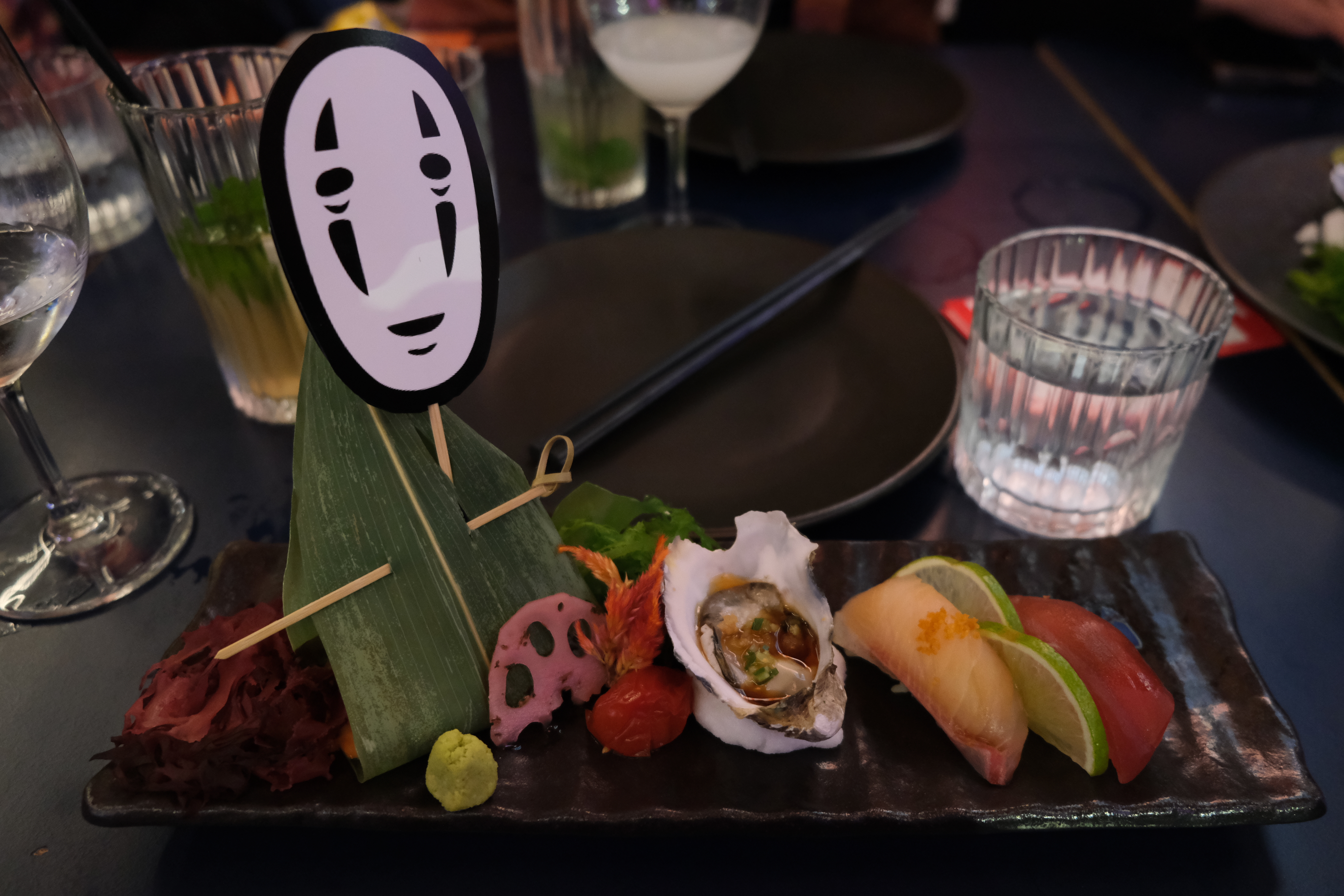
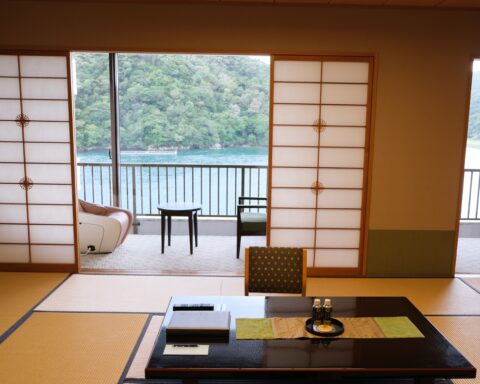
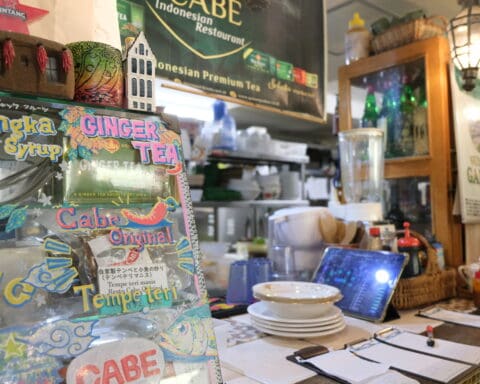
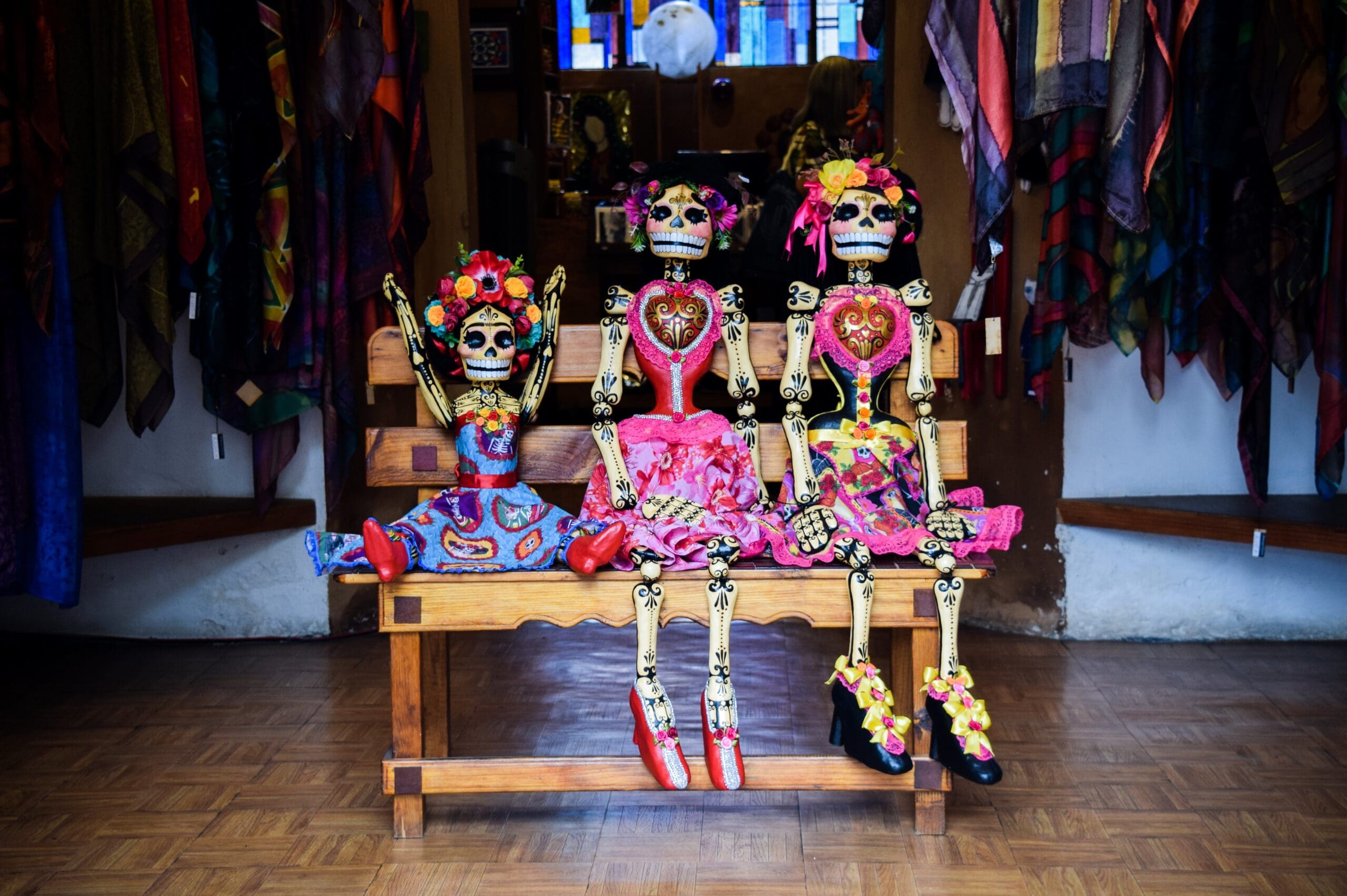
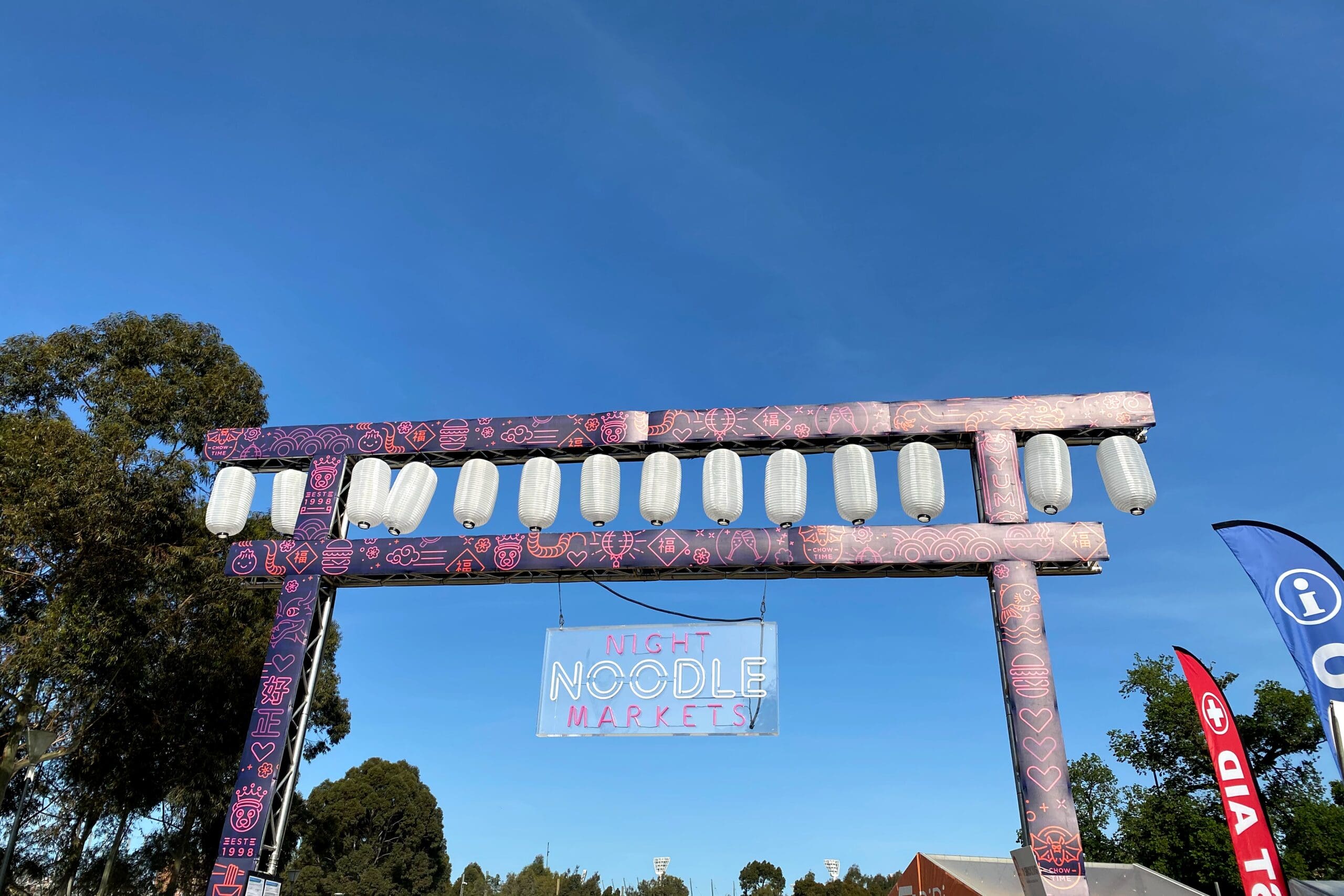
[…] Hyogo / Kobe […]
[…] there, we went to eat the Kobe beef. An hour or so later, satisfied we stepped out and immediately caught in the snowstorm (it was […]
[…] Hyogo / Kobe […]
[…] Kobe beef in […]
[…] Kobe Beef The Most Expensive Meat I Have Ever Eaten […]
[…] suspected these were the world-famous Kobe beef, but we were too drunk to check with the waiters […]
[…] Kobe Beef The Most Expensive Meat I Have Ever Eaten […]
[…] system successfully with a Suica card; ate plenty of seafood at Kuromon Ichiba market Osaka and the most expensive meat I have ever eaten in my life, Kobe beef; survived a horrible night in a capsule hotel whilst enjoyed another night in another capsule […]